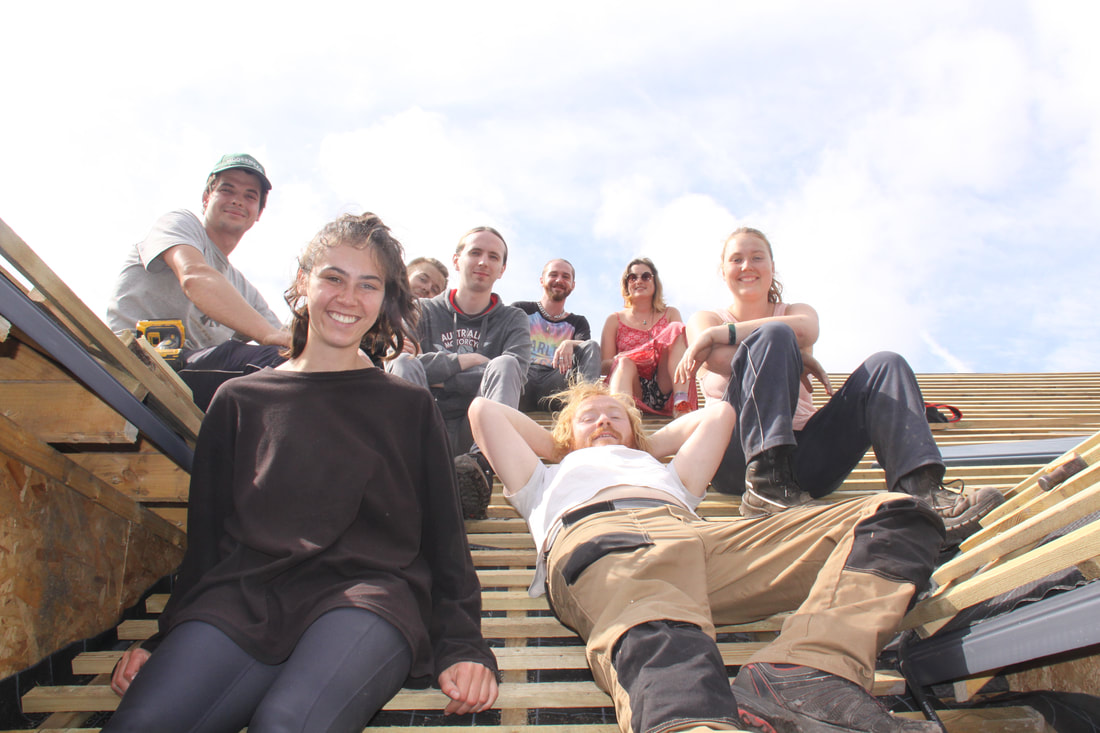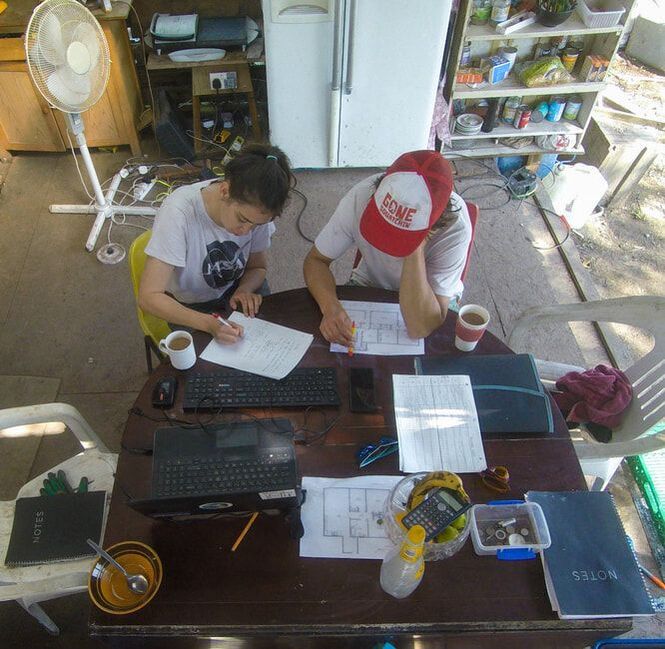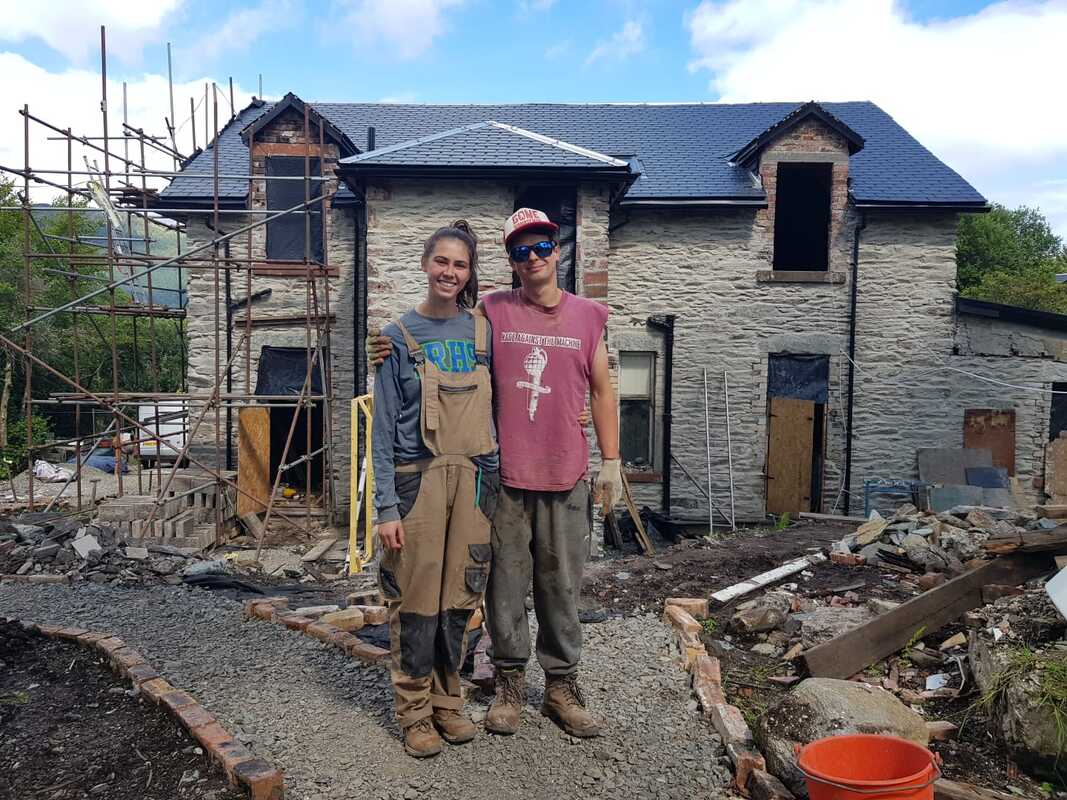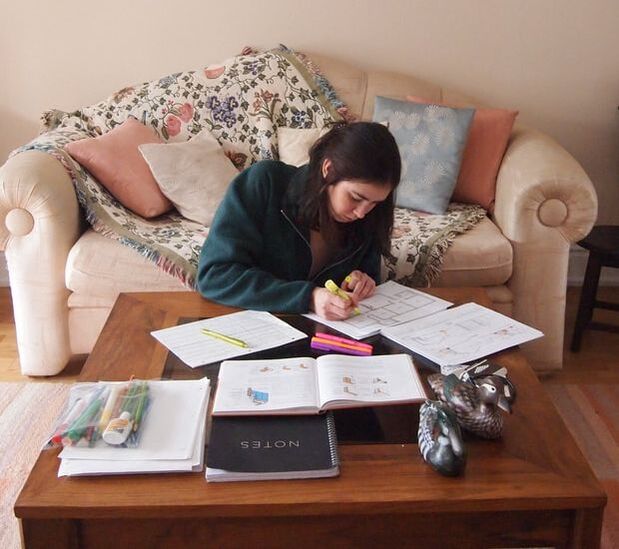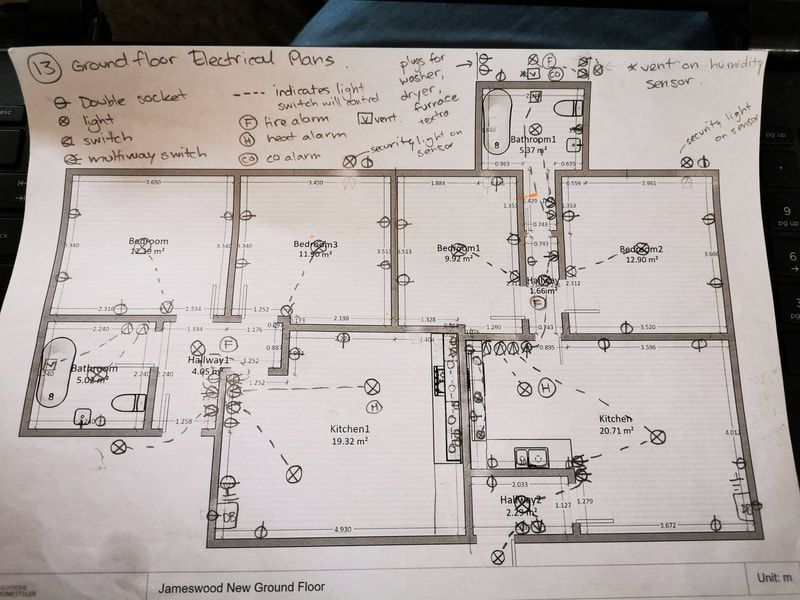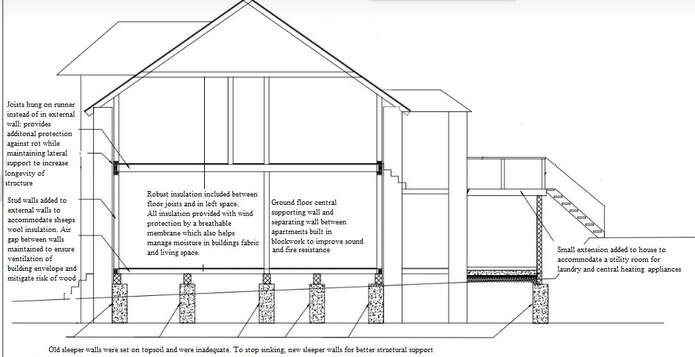|
In our last progress report, Cal and I had managed to put on a roof all by ourselves! (Well… with a lot of help from our ragtag roofing team!) It’s been a long time since our last report, and a LOT has happened since then! Our silence has not occurred because the project has come to a halt, but rather because we’ve been so busy building, it’s been hard to take a moment for blog writing! In the winter of 2019, Cal and I had one of our most challenging tasks to carry out yet. Designing the rest of our restoration and applying for a building control warrant! We wanted to take the design phase of this restoration seriously and we had a few goals in mind for our build! We wanted to
As the sun started to set earlier, we spent long evenings in the caravan, reading textbooks and PDF’s cover to cover, and debating (sometimes heatedly) over how we were going to rebuild our floors and walls, insulate, ventilate and more! As we read, we realised there was a lot more to consider when designing a restoration than we had originally thought! If we have some interest, I would be happy to write a more in depth blog post about the material and building approaches we chose to use for our restoration! We came across some excellent resources while researching for this project. You can find a list of resources that we found helpful for our restoration by CLICKING HERE! Once we had a plan, it was time to apply to building control. In the UK, major alterations that are made on a home will have to be approved and overseen by building control. Similar regulatory bodies will exist in most other countries, and their job is to make sure that all work done to a building is carried out to a safe and efficient standard. Usually, an architect or contractor would apply for building warrants on behalf of their client. I’ve found out that even self builders will usually hire a professional for help with the design phase of a project and building control applications. Cal and I, however, don’t have the budget for an architect or contractor, and like most things, we set out to complete this task, rather naively thinking, “How hard could it really be?” Cal tends to have very little patience for bureaucracy, and when he has to partake in paperwork of any kind, he has been known to voice his frustrations rather loudly to anyone in the vicinity. To make matters worse, Cal tends to have contempt towards authority. He knows right from wrong, but doesn’t like being told what to do. With so many injustices in todays world, I think it’s a good thing to beat to your own drum. But I am absolutely sure it will make our building control application a hundred times more difficult. For these reasons, I took responsibility of the building control application, and plan on being the point of contact for all communications with building control officers. The procedure for writing, drawing and submitting a building control application is very vaguely outlined online. I assume this is because the process is usually undertaken by professionals who have completed countless applications. From what I could gather, the more information, the better. I read each part of the UK building standards that was related to our project. I included nearly word for word, every detail from the code that pertained to our project. I felt as though I was plagiarising the UK building code. Thankfully, our building control officer knew we weren’t professionals, and he didn’t expect computer-derived drawings from us. Two and a half weeks later, I had sixteen pages of information on how we would build our house, and a stack of drawings that showed elevations, sections, floor, electrical and plumbing plans for Jameswood. I was sure there was far too much information included in the document, and I was later amused when our officer asked us to add three minor notes to the application in order to approve the warrant. We managed to submit our application at one of the busiest times for the building control office. And to make matters worse, I’m sure my application was not in a conventional format, making it more difficult to read through and assess. But fair warning to those of you who are about to go through the process: get your application in with plenty of time before your planned start date. It took eight weeks to get an initial response from building control (not an acceptance, just a response.) How we saved a thousand pounds on our project!Overall, the feedback was good. I must have submitted enough information, because I only had a few minor notes to add into the application. The adjustments took less than an hour to include. But there was one problem. We were told that even if we follow building code, all structural alterations made to buildings in Scotland required certification by a structural engineer. When I read this line in the email, my stomach sank as I imagined the horrendous bill we would receive for commissioning a structural engineer. I started contacting engineer firms and after the first day of calls and emails, my worst fears had been confirmed. Most structural engineers said they would only work on projects lead by an architect. Those that would work with us were quoting over 2000 pounds for their service. At the time, it felt as though we were being penalised for making improvements to our building. All the changes we wanted to make were there to improve the structural integrity, fire and water resistance of our home. If we had just built a like-for-like structural that had the same problems as before, we wouldn’t be charged two grand for a structural engineer to tick off the project! I really do understand that this requirement has been put into place to make sure structures are safely built, and I know the importance of these safeguards. But at the time, while receiving shocking quotes that would eat into savings we had set aside for windows, it didn’t feel very “fair”. After calling what felt like every structural engineer in Glasgow and Edinburgh, we finally found a really understanding guy who liked our project. He had a similar original quote to the rest we had received, but he said he could take close to a grand off the original price if we could produce our own CAD drawings. I had no idea how to use CAD software, but jumped at the opportunity. How hard could it be? I decided to try out Skillshare, a subscription-based online learning platform. I found an autoCAD course that was specific to architecture, and over the next five days I managed to learn how to use the software and produce floorplans, new elevations and section drawings of the house! It was so nice to see Jameswood come to life on my computer screen, and five days of learning and useful new skill had also saved our project 1000 pounds! We were thrilled! Having genuinely been blown away by how helpful Skillshare was for our project, we’ve partnered up with the website to offer our readers a free trial! And as a bonus, if you enjoy the website as much as we do, signing up will directly support our restoration – so learning new skills for yourself will help us on our journey as we learn how to restore Jameswood! You can sign up for your free-trial by clicking the link: https://skillshare.eqcm.net/whathavewedunoon Thanks to the kindess and patience of a structural engineer that believed in our project, as well as the power of an incredible online learning community, Jameswood is one step closer to being structurally sound and stronger than ever. Having submitted an amended application that now included a structural engineer’s certification, we heard back from our officer in less than a week. I jumped for joy when I received the email that said our application had been accepted. It was a very drawn out and stressful process, but I’m glad Cal and I designed our restoration together, and lead the building control application process ourselves. Though I know I’m still far from being an expert, this process gave me a crash course in restoration design, and how to navigate the bureaucracy involved in a renovation. The process was frustrating, but it was also empowering. I’ve learnt how to design an efficient building, while taking into account the needs of a traditionally built home, I’ve learnt how to make and submit a building control application and how to produce architectural CAD drawings. Admittedly, we’ve only just begun our journey through navigating building control. With our application accepted, we’ll now have a number of inspections throughout the restoration to make sure we are building everything to code. But we feel like the hard part, the paperwork, is over. Now we just have to follow our designs, and do things right, just like we had always planned. Thank you again for following our journey, As we take on the restoration of Jameswood Villa. Claire x
20 Comments
|
